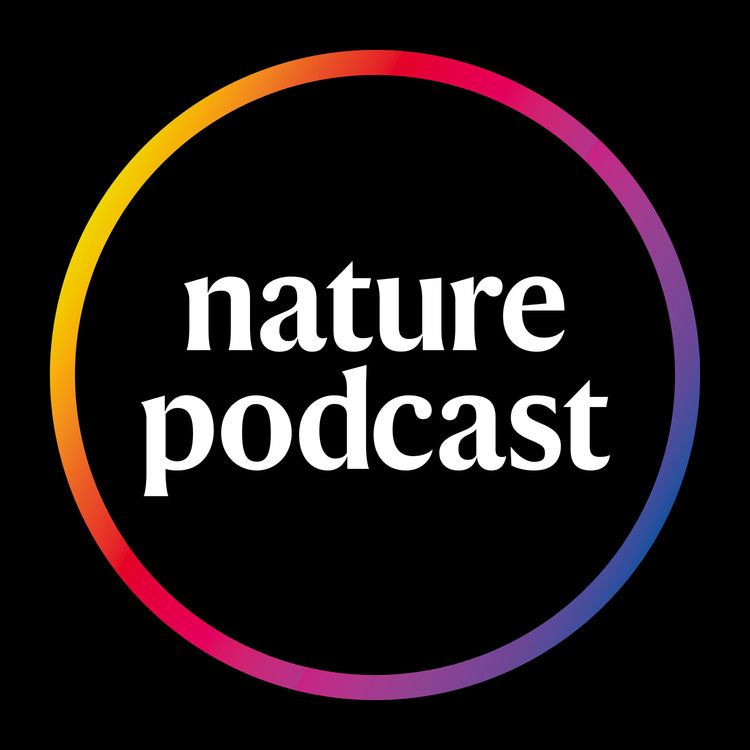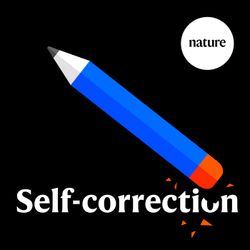Share

Nature Podcast
A new way to cool computer chips — from within
Keeping electronics from overheating, and how to include minority populations in genetic analyses.
In this episode:
00:46 Cool computers
Keeping components cool is a major hurdle when it comes to increasing electronic power. This week, we find out about a new way to integrate tiny microfluidic channels directly into circuits, to help keep them cool. Research Article: van Erp et al.
06:57 Coronapod
By comparing coronavirus genomes taken from people around the world, researchers are getting an idea of how SARS-CoV-2 is changing as it spreads. We discuss a particular genetic mutation that rapidly became dominant early in the pandemic, and the effect it may have had on the outbreak. News: The coronavirus is mutating — does it matter?
21:41 Research Highlights
How rock avalanches can cause destructive air blasts, and melting glaciers cause lakes to grow. Research Highlight: The violent blasts that can add to an avalanche’s devastation; Research Article: Shugar et al.
23:59 The people left out of genetic studies
Minority populations are often underrepresented in genetic study recruitment. However, even when data about them is collected it may go unused. We find out why, and what can be done about it. Comment: Don’t ignore genetic data from minority populations
30:51 Briefing Chat
We discuss some of the latest stories highlighted in the Nature Briefing. This week we discuss how bacterially-infected mosquitoes could curb dengue fever, and some surprisingly large black holes. Nature News: The mosquito strategy that could eliminate dengue; Nature News: ‘It’s mindboggling!’: astronomers detect most powerful black-hole collision yet
More episodes
View all episodes

Ancient viral DNA helps human embryos develop
33:43|00:50 How ancient viruses drive modern human developmentResearch suggests that ancient viral-DNA embedded in the human genome is playing a key role in early embryo development. Around 8% of our genome consists of endogenous retrovirus DNA — the remnants of ancient infections, but knowledge of their activity is limited. Now, a team show that these sequences are required for the correct development of lab-derived embryo analogues, and for the switching on of human-specific genes.Research Article: Fueyo et al.News and Views: Ancient viral DNA in the human genome shapes early development10:39 Research HighlightsLonger whale mothers are more likely to give birth to daughters — plus, how the stink of the corpse flower waxes and wanes to attract pollinators.Research Highlight: Big mother whales have more daughters than sonsResearch Highlight: Corpse flowers waft out stinky compounds as fast as landfills do13:05 How heat can fuel DNA computersResearchers have developed a way to use heat to recharge DNA-based computer circuits, which could help overcome one of the stumbling blocks preventing this technology from being scaled up. Although DNA strands have been used to perform computational tasks for some time, current methods can run out of energy or build up waste products, preventing their continued use. Now, using just heat a team have demonstrated a reuseable neural network based on DNA. They hope that ultimately this could be a step in the development of bigger and more powerful DNA computers that could be used to power targeted clinical therapies.Research Article: Song & Qian22:20 Briefing ChatA one-time gene therapy for Huntington’s disease show promise at slowing the brain disorder’s progression — plus, how mitochondria throw out ‘tainted’ DNA.Nature: Huntington’s disease treated for first time using gene therapyNature: Mitochondria expel tainted DNA — spurring age-related inflammationSubscribe to Nature Briefing, an unmissable daily round-up of science news, opinion and analysis free in your inbox every weekday.
Audio long read: Autism is on the rise — what’s really behind the increase?
25:36|In April, Robert F. Kennedy Jr held a press conference about rising diagnoses of autism, and said he would soon be announcing a study to find the responsible agent. Although Kennedy said that environmental factors are the main cause of autism, research has shown that genetics plays a bigger part. Also, the rise in prevalence, many researchers say, is predominantly caused by an increase in diagnoses rather than a true rise in the underlying symptoms and traits.Although the US National Institutes of Health (NIH) announced a US$50 million to fund studies on the causes of autism, many researchers were dismayed that these developments seemed to ignore decades of work on the well-documented rise in diagnoses and on causes of the developmental condition.This is an audio version of our Feature: Autism is on the rise — what’s really behind the increase?
How a dangerous tick-borne virus sneaks into the brain
32:42|00:48 New insights into tick-borne encephalitisResearchers have identified a key protein that helps tick-borne encephalitis virus enter the brain. In rare cases an infection can lead to serious neurological symptoms, but little was known about how the virus interacts with human cells. Now, a team show that a protein found on the outside of cells plays an important role in infection. In mouse experiments, they show that blocking the ability of the virus to bind to this protein protected the mice from disease. Currently no treatments exist, but the team hopes that this research will ultimately lead to a viable drug for this disease.Research Article: Mittler et al.08:47 Research HighlightsThe squirming robot that speeds up the insertion of an emergency breathing tube — plus, the 10,000-year-old remains that could be the oldest intentionally preserved mummiesResearch Highlight: Soft robot steers itself down the human airwayResearch Highlight: Smoke-dried mummies pre-date Egypt’s embalmed bodies11:21 How might cancelled NIH grants affect the future of US science?To assess the potential impact of cuts to funding by the Trump administration, Nature trained a machine-learning bot to try and reproduce the NIH’s method of cancelling grants and applied it to science that was successfully funded around ten years ago. This thought experiment shows that highly impactful science and medical research might have been at risk had a similar process been followed a decade ago, revealing the potentially broad-reaching consequences of these actions today.Nature Index: What research might be lost after the NIH’s cuts? Nature trained a bot to find outNews: Are the Trump team’s actions affecting your research? How to contact Nature20:54 Briefing ChatWhat researchers understand about chatbot-induced psychosis, and the AI designed viruses capable of killing E. coli bacteria.Nature: Can AI chatbots trigger psychosis? What the science saysNature: World’s first AI-designed viruses a step towards AI-generated lifeSubscribe to Nature Briefing, an unmissable daily round-up of science news, opinion and analysis free in your inbox every weekday.
Apocalypse then: how cataclysms shaped human societies
27:39|Science journalist Lizzie Wade’s first book, Apocalypse: A Transformative Exploration of Humanity's Resilience Through Cataclysmic Events explores some of the cataclysmic events that humans have faced through history. Lizzie joined us to discuss what modern archaeology has revealed about these events, and the role these they’ve have played in shaping societies around the world.Apocalypse: A Transformative Exploration of Humanity's Resilience Through Cataclysmic Events Lizzie Wade Harper (2025)Music supplied by SPD/Triple Scoop Music/Getty Images
This AI tool predicts your risk of 1,000 diseases — by looking at your medical records
35:31|00:50 The AI tool that predicts disease riskResearchers have developed an AI tool that can calculate a person’s risk of developing over 1,000 different diseases, sometimes years in advance. The system, called Delphi-2M, was trained to identify patterns of disease progression using 400,000 people's health records from data repository the UK Biobank. This training allowed it to predict someone’s future disease risks, based on their current medical record. While AI health prediction systems do exist, they typically only estimate risks for a single disease — the authors hope that their system could one day save healthcare professionals time and be used to calculate disease burdens at a population level.Research Article: Shmatko et al.News: What diseases will you have in 20 years? This AI makes predictions11:01 Research HighlightsEvidence that refugees hosted by local families integrate better into their adoptive country — plus, the squidgy shirt that can keep wearers cool.Research Highlight: How to help refugees thrive: have local families host themResearch Highlight: Jelly-filled garment keeps wearers cool when heat and humidity soar13:50 Give an AI a task and it may cheat for youUsing AI tools may make you more likely to cheat at tasks like tax reporting, according to a new study. Using a well-studied test of honesty, researchers looked to see if people were more likely to engage in unethical behaviour if given the option of delegating it to an AI. Including AIs seemed to increase the chance that someone would be dishonest, which raises concerns about the impacts of these tools on ethics.Research Article: Köbis et alNews and Views: People are more likely to cheat when they delegate tasks to AI24:54 Briefing ChatEurope has a new supercomputer, JUPITER, that could boost its AI ambitions, and a catalogue of octopus movement.Nature: World's most energy-efficient AI supercomputer comes onlineNew York Times: Building an Octopus Dictionary, One Arm Movement at a TimeSubscribe to Nature Briefing, an unmissable daily round-up of science news, opinion and analysis free in your inbox every weekday.
Detecting gravitational waves
10:21|In 2015, the Laser Interferometer Gravitational Wave Observatory (LIGO) facilities in the US directly detected ripples in space-time, known as gravitational waves. These waves were produced by the final spiral of two orbiting black holes that smashed into each other, sending ripples across the Universe. In this podcast, Benjamin Thompson speaks to Cole Miller from the University of Maryland about the quest to detect gravitational waves, which were first hypothesised by Albert Einstein back in 1916.
Feeling the heat: fossil-fuel producers linked to dozens of heatwaves
36:39|00:45 Attributing extreme heat events to major energy producersMajor energy producers increased the likelihood and intensity of heatwaves, according to research published in Nature. Using data from an international disaster database, a team developed a methodology to investigate how much anthropogenic climate change had influenced heatwaves. They conclude that many of these events would have been “virtually impossible” without climate change, and that nearly a quarter of the heatwaves recorded from 2000 to 2023 can be directly linked to the greenhouse-gas emissions from individual energy giants.Research Article: Juvé et al.News and Views Forum: Heatwaves linked to emissions of individual fossil-fuel and cement producersNews: Dozens of heatwaves linked to carbon emissions from specific companies10:47 Research HighlightsHow shifting coastal tides may have spurred the rise of the world’s oldest civilization — plus, the liquid crystal lenses that can refocus in a flash.Research Highlight: Changing tides ushered in the world’s first civilizationResearch Highlight: Liquid-crystal specs refocus with the push of a button12:40 The growing resistance to the US war on scienceScience in the United States is facing an increasing crisis, in the face of swinging cuts and President Donald Trump’s ongoing attack on anything with a connection to diversity, equity and inclusion. In the face of this crisis, many researchers are fighting back — we hear about some of their efforts, and what they think about their chances of success.News Feature: Scientists take on Trump: the researchers fighting back27:28 Briefing ChatHow CRISPR-edited pancreas cells could offer new hope for those with type 1 diabetes, and what brain scans reveal about how we process colour.Nature: Hope for diabetes: CRISPR-edited cells pump out insulin in a person — and evade immune detectionNature: My blue is your blue: different people’s brains process colours in the same waySubscribe to Nature Briefing, an unmissable daily round-up of science news, opinion and analysis free in your inbox every weekday.
Research misconduct: how the scientific community is fighting back
52:13|In 2016, Brian Wansink wrote a blog post that prompted scientific sleuths to investigate his work. They found evidence of data manipulation, and, after several news articles and two investigations by his institution, he would found to have committed misconduct, as defined by Cornell University. His work had been used to inform US policy around food, much of which has now been thrown into question.Cases like this are rare, but science is not immune to misconduct. The rise in 'paper mills' — organisations that produce questionable or fake papers that they sell authorships on — has led some to worry that misconduct is on the rise and that a proportion of the scientific literature cannot be trusted.In episode two of Self Correction, we explore how researchers are responding to the problem of research misconduct. We discuss how difficult it is to determine the prevalence of misconduct, and how sleuths, journalists and research integrity institutions are fighting back.This episode was written and produced by Nick Petrić Howe. Dan Fox was the editor. The music was provided by Triple Scoop Music.Subscribe to Nature Briefing, an unmissable daily round-up of science news, opinion and analysis free in your inbox every weekday.
Nature goes inside the world’s largest ‘mosquito factory’ — here’s the buzz
10:57|Raising mosquitoes to tackle disease might sound like an odd concept, but that’s what a facility in Brazil is aiming to do. Millions of mosquitoes are produced there every week, but these insects carry harmless Wolbachia bacteria that curbs their ability to spread deadly human viruses. Nature reporter Mariana Lenharo visited the facility and told us all about her experience in this Podcast Extra.News: This is the world’s largest ‘mosquito factory’: its goal is to stop dengueVideo: Inside a mosquito factorySubscribe to Nature Briefing, an unmissable daily round-up of science news, opinion and analysis free in your inbox every weekday.